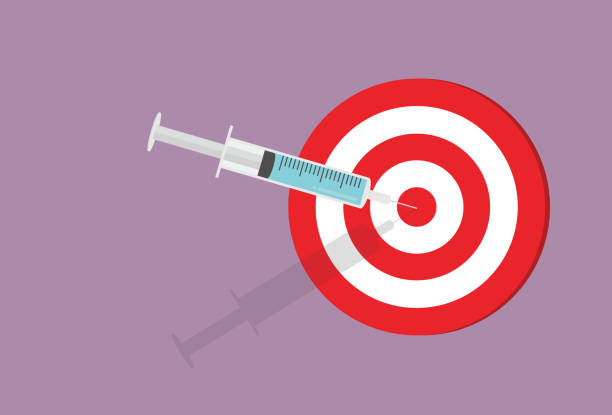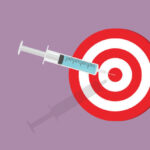Device accuracy is pivotal in remote patient monitoring (RPM). Physicians need accurate health data to make informed treatment decisions and provide optimal patient care. This article will help you understand why RPM device accuracy is critical and how it contributes to effective remote healthcare delivery. We explore the variations in accuracy between device manufacturers and shed light on the crucial role of FDA clearance.
Remote Patient Monitoring Devices
RPM devices capture vital sign data via sensors when a patient takes a measurement anytime throughout the day. That data is processed and transmitted directly to a patient’s healthcare provider. This data helps providers manage both acute and chronic conditions, prevent health complications and infection risk, and reduce healthcare costs.
However, RPM device readings must be accurate and secure to be effective and reliable. Accuracy means the device can measure and report health data with minimal error or deviation from the true value. Security means the device can protect the data from unauthorized access or tampering.
RPM Device Accuracy
Whether monitoring blood glucose levels, peak expiratory flow, or sleep patterns, precise and reliable data is essential for accurate diagnosis and effective treatment planning. With accurate health data, a physician can assess a patient’s health status, track trends, and identify potential issues promptly. However, not every RPM device is the same when it comes to accuracy.
Variations can be due to design, technology, and calibration processes. Therefore, choosing a reliable manufacturer can help overcome concerns and remote patient monitoring challenges.
RPM Devices and FDA Clearance
First, FDA clearance means that a device has been reviewed by the FDA and found to be safe and effective for its intended use. FDA clearance plays a vital role in establishing the reliability of an RPM device. An FDA-cleared device must meet specific criteria and performance standards to ensure accuracy and quality. In addition, FDA-cleared devices are subject to post-market surveillance and reporting requirements to monitor their safety and effectiveness.
FDA clearance requires a formal application process called a 510(k) submission. An FDA-cleared device must meet the following qualifications.
- The device must use the same technology for the same purpose as an existing device.
- The device must be used for the same purpose as an existing device but may use different technology. However, the technology does not raise concerns about its safety or effectiveness. The manufacturer must provide evidence showing the product’s safety and efficacy.
Not all RPM devices are FDA-cleared. Some may be marketed as FDA-registered, which means they have yet to be reviewed or cleared by the agency. In addition, some devices are not FDA-registered, meaning they have no oversight or regulation. As a result, these devices may have yet to determine accuracy and quality.
FDA clearance adds an extra layer of assurance for healthcare professionals and patients, giving them more confidence in the RPM device.
What Determines RPM Device Accuracy?
According to a Harvard University article, home blood pressure monitors are not always accurate. The article states, “Home blood pressure monitors may be inaccurate in 5% to 15% of patients, depending on the threshold for accuracy used.” Accuracy refers to how well a device measures what it is supposed to measure.
Accuracy is essential for RPM devices because it can affect patient diagnosis and treatment. For example, inaccurate readings of a remote blood pressure monitor can lead to misdiagnosis, delayed treatment, or unnecessary interventions.
One reason for variation in accuracy among RPM devices is the manufacturer. Different manufacturers may use various methods, standards, or algorithms to design and test their devices. Some devices may have more rigorous testing and validation than others. Yet others may have more features or functions than others. Furthermore, some devices may be more user-friendly or compatible with other systems.
RPM Device Accuracy Assessment
RPM device accuracy is determined through various validation and evaluation processes. It is important to note that accuracy assessment is an ongoing process, and manufacturers often perform post-market surveillance to monitor the performance of RPM devices in real-world settings and make improvements if necessary. Here are some key factors and methods used to assess the accuracy of RPM devices:
Clinical Trials
Manufacturers may conduct clinical trials to evaluate the accuracy and performance of their RPM devices. These trials involve testing the devices on a sample population of patients under controlled conditions. In addition, the collected data is compared against a gold standard or reference method to assess accuracy.
Comparison Studies
Comparison studies involve comparing the measurements or data obtained from the RPM device with those obtained from other validated devices or methods. The results are analyzed to determine the level of agreement or discrepancy between the devices, indicating the accuracy of the evaluated RPM device.
Bench Testing
Remote patient monitoring medical devices undergo bench testing, which involves analyzing the device’s technical specifications, hardware, and software components. This testing ensures that the device meets established standards and specifications for accuracy, reliability, and precision.
Validation Protocols
Validating the accuracy of an RPM device requires specific protocols and procedures to evaluate its performance. Validation protocols may vary depending on the type of device and the particular healthcare parameters being monitored. When researching RPM devices, learn about these protocols and the tests conducted, the measurements taken, and the statistical analysis methods applied.
RPM Device Accuracy
How can you tell which RPM devices are accurate and trustworthy? The best way is to ask the remote patient monitoring vendor for the device’s accuracy. Another way is to look for independent reviews or ratings from reputable sources, such as Healthline or Medical News Today. Check with references the RPM vendor provides to verify. Another way is to look for endorsements or recommendations from professional Healthcare system organizations.
Tenovi RPM Devices and Accuracy
Tenovi offers a range of FDA-cleared and clinically validated RPM devices with industry-leading accuracy. Our devices measure vital signs and other health data and send them to a physician platform or the Tenovi dashboard via Tenovi’s secure cloud platform. In addition, Tenovi offers the following cellular-connected remote patient monitoring devices.
Cellular-Connected Devices
Blood Pressure Monitor (BPM)
Measures systolic and diastolic pressure and pulse rate with the following accuracy:
- Systolic range: 0-299mmHg; 1mmHg resolution
- Systolic accuracy: 3mmHg
- Diastolic range: 60-230 mmHg; 1mmHg resolution
- Diastolic accuracy: 3mmHg
- Pulse range 40-199bpm
- Pulse accuracy: 4%
Weight Scale
Measures body weight and body mass index with the following accuracy:
- The scale accuracy is 0.2kg using high-precision sensors and gravity compensation.
Blood Glucose Meter (BGM)
Measures blood sugar level with the subsequent accuracy:
- Measurement range: 20-600mg/dL
- Measurement accuracy within +/- 5mg/dL: 69.5%
- Measurement accuracy within +/- 10mg/dL: 97.0%
- Measurement accuracy within +/- 15mg/dL: 100%
- Sample size: 0.5uL
Pulse Oximeter (POx)
Measures blood oxygen saturation and heart rate with the following accuracy:
- SpO2 range: 35%-100%, resolution 1%
- SpO2 accuracy: +/- 2%
- Pulse range: 25-250 bpm, resolution 1%
- Pulse accuracy: +/- 2%
- Perfusion index: Min. 0.3%
Peak Flow Meter (PFM)
Measures PEF and FEV1 with the following accuracy:
- 0.5L-8L volume range
- 60L/min – 840L/min Flow Rate
- Accuracy: ±3% of volume
Infrared Thermometer
Measures body temperature with the following accuracy:
- +/-0.3°C (+/-0.6°F)
Cellular RPM Devices
Tenovi Cellular Blood Pressure Monitor
A 4G cellular device with the following accuracy:
- Systolic range: 60 mmHg-230 mmHg (8.0-39.9kPa)
- Diastolic range: 40 mmHg-130 mmHg (5.3-17.3kPa)
- Pulse value: 40-199 beats/min
- Blood pressure accuracy: within +/- 3 mmHg or 2%
- Pulse accuracy: within +/- 5%
Tenovi Cellular Weight Scale
A 4G cellular device automatically sends with the following accuracy:
- 50kg+/- 0.2kg
- 100kg+/- 0.3kg
- 150kg+/- 0.4kg
- 200kg+/- 0.5kg
Tenovi Cellular Blood Glucose Meter
- Measurement range: 20-600mg/dL
- Accuracy: within +/- 5 mg/dL: 69.5%
- Accuracy: within +/-10mg/dL: 97%
- Accuracy: within +/-15mg/dL: 100%
- Sample volume: 0.8uL
Partner RPM Devices
In keeping with our promise to provide flexibility, Tenovi partners with select leading manufacturers of RPM devices that seamlessly connect to the Tenovi Cellular Gateway. For example, Tenovi offers our partners the following FDA-cleared, accurate, and secure partner devices.
Trividia Health True Metrix Air BGM
Measures blood glucose meter that uses advanced technology to ensure accurate results:
- Measurement range: 20-600mg/dL
- Measurement accuracy within +/- 5mg/dL: 64.0%
- Measurement accuracy within +/- 10mg/dL: 87.0%
- Measurement accuracy within +/- 15mg/dL: 99.0%
- Sample size: 0.5uL
OMRON BPM
A blood pressure monitor with clinical accuracy and a large LCD screen, and a memory function:
- Blood pressure: within +/- 3 mmHg or 2 percent
- Pulse: within +/- 5 percent of reading
OMRON Wrist BPM
A wrist blood pressure monitor with a large LCD screen that clearly displays the systolic pressure, diastolic pressure, and pulse rate.
- Blood pressure: within +/- 3 mgHg or 2 percent
- Pulse: within +/- 5 percent of reading
Vitafit Bariatric Scale
The Vitafit bariatric scale has a high capacity weight measurement range of 0.1 – 550 lbs.
- Accuracy: 0.1/0.05kg
With Tenovi RPM devices, patients monitor their vital sign health at home and share the data with their doctor in real-time. This can help improve patient health outcomes, reduce hospital visits, and save on healthcare and administration costs. To learn more about Tenovi and the accuracy of each RPM device, visit our website and schedule a free demonstration.
Key Points: RPM Device Accuracy
The effectiveness of a remote patient monitoring device relies heavily on the accuracy of the data it provides to physicians. With accurate data, physicians can diagnose and treat patients more effectively and efficiently. Furthermore, accurate data empowers patients to monitor their health and make informed decisions about their care.






